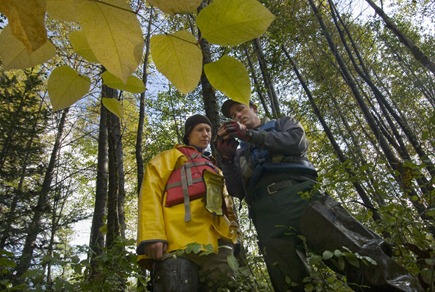The Importance of Collaboration in Protecting Nature
Editor's Note: Our thoughts are with those impacted by the recent earthquake and tsunami in Japan. While it may be some time until the full impact has been assessed, we will continue to work with our nonprofit partners to determine where our support can be of the greatest benefit. More on our efforts supporting relief in Japan can be found here.
Guest Post By Jean-Louis Ecochard, CIO, The Nature Conservancy
In a recent issue, The Economist published a special report on feeding the world, calling it “the 9 billion-people question.” How we meet the demands of a growing global population while managing the impact on oceans, lakes, rivers, and land will be one of society’s biggest challenges in the coming decades. Part of the answer will come from developments in technology that allow farmers, scientists and engineers to collect and share data, analyze options and develop new approaches to sustainable food production. The impact of enabling anyone, anywhere, to collaborate and contribute to the common store of knowledge is enormous. Beyond harnessing data and scientific information, though, it is equally essential for technology to help bring people together to solve real problems with smart solutions for a more sustainable future.
As CIO of The Nature Conservancy, I see opportunities for leveraging technology every day.
In Northern California, for example, scientists are working to protect and restore the Garcia River, a sparkling jewel surrounded by redwood forest and home to spawning Coho salmon. To determine progress toward meeting goals, scientists are using remote sensors to monitor water temperature and efficiently track indicators of forest health, including canopy cover, structure and complexity, as well as wildlife habitat. Through this data-driven approach, the Conservancy is identifying ways to improve our efforts on the Garcia River and testing new tools and techniques that could be deployed throughout the region.
The key to success goes beyond good science: our challenge is to establish systems that facilitate collaboration and foster working relationships between a wide range of stakeholders, from farmers and ranchers to business owners and government officials. In addition to new handheld devices, mobile applications, games and social networking, all of which offer exciting opportunities for collaboration, The Nature Conservancy is also investing in enterprise solutions that provide a platform for future applications. Microsoft SharePoint, for example, helps our field offices coordinate volunteers who previously used cumbersome paper forms, maps and reports sent through the postal mail. SharePoint is allowing Nature Conservancy staff around the world to work more effectively across borders and geographies on everything from development to field work, as well as programs and communications. With a disparate global workforce, it is an important tool in collaborating, sharing, accessing, and finding the information we need to be effective in pursuing our mission of protecting nature, for people today and future generations.
Information and communications technology will continue to help us support an increasing worldwide population while better protecting our water, land and natural resources. At the end of the day, however, it is less about the technology than about the power of new tools in bringing people together to find practical solutions. We haven’t solved the “9 billion-people question” yet, but we are getting closer to some of the answers.
Take action:
- Read more stories this week from #11NTC
- Read Akhtar Badshah's white paper on How Nonprofits Can Harness 'Disruptive Technologies' for Social Good
- Nonprofits: Get a software donation!
- For a deep dive on our Citizenship efforts around the world, please visit: Microsoft.com/Citizenship
- If you are active on social networks, talk with us: Twitter.com/msftcitizenship (@msftcitizenship) Facebook.com/MicrosoftCitizenship
- SHARE these resources with those you think could benefit!
